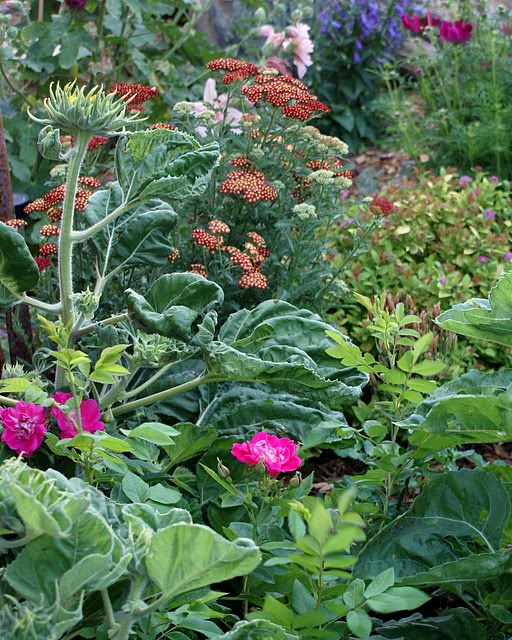
This week’s edition of High Plains Prose began as a simple wildflower ‘show & tell’ article. Then, like my real-life landscaping project, it grew and grew…as you shall soon see. If flowers, history and a ride in the country tickle your fancy, hop on the Farmgirl Prairie Fairy Express for a nice, long outing. A lesson about “floriography” also awaits you. Oh, and this too…yes, we do have flower fairies out here…don’t you?
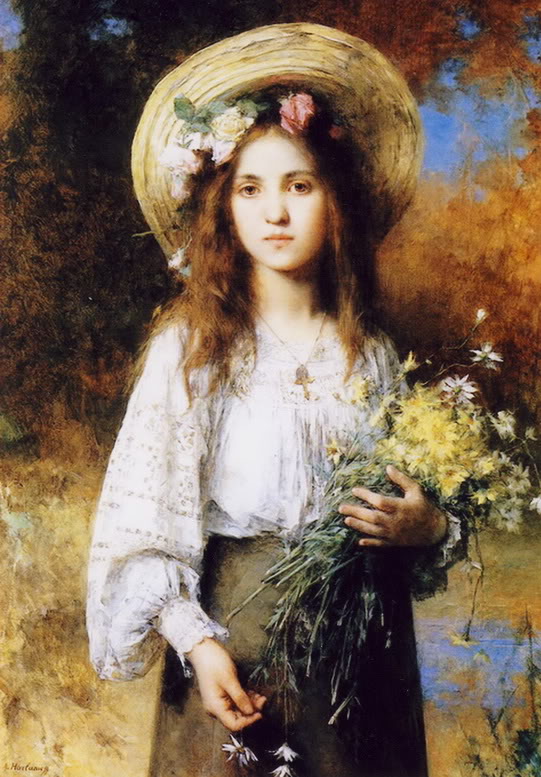
Like many a farmgirl, I have a deep and sentimental fondness for old things and old ways. Old-style manners (gentle social etiquette) are rare these days. So is seeing wholesome, whimsical joy in adults…clean eyed, open-hearted, romantic, dreamy and childlike. Antique art from the late 1800s and very early 1900s is intoxicating to me. If I could take a dream vacation, it would not be just a location – it would be a place and a time…right around 1910. The ultimate destination would be a Victorian era cottage or cabin in the country (our country)…surrounded by gardens, flowers, livestock and wildlife. I would be wearing a comfy, period frock and a wide-brimmed straw bonnet. Would you like to come along? Take my hand, close your eyes and let us go back…to the kind of place that Victorian artists and authors created for us. Kate Greenaway, Cicely Mary Barker, Beatrix Potter, Jessie Wilcox Smith, Edith Holden and Catherine Klein are my favorites. Individually and collectively, they played key roles in promoting a cultural love affair with Nature.
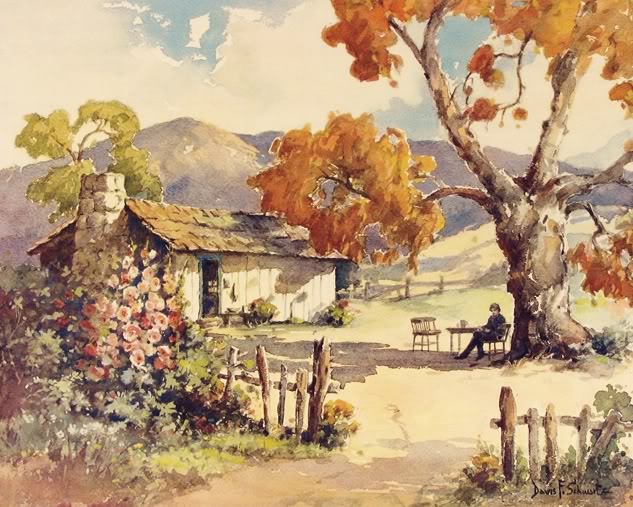
One of my favorite modernday movies is Miss Potter…a lovely film about the life and times of beloved author and artist, Beatrix Potter. The end of the film makes mention of Beatrix leaving her estate of several thousand acres to her homeland for the said purpose of keeping it in it’s natural state and as a national sanctuary “park”. Her fortune grew as a result of selling thousands of her palm sized children’s books and with that wealth, she systematically bought adjacent farm parcels as they came up for sale. The farming way of life and protecting Nature can and ought to go hand in hand just as she did it. I’ll call it full-circle stewardship. Beatrix is best known as an author of quaint books for small children, but she was far more. She was a Naturalist at heart and she used her talent and resources to make a difference in her world. The era in which she lived was a time of an awakening. People embraced a new-found interest in Nature…studying it and falling in love all over again with the good Lord’s creation. Manufacturing consumer goods is another thing humans do and the Victorian paper goods market enjoyed a rich harvest. The seeds of imagination and a love of natural beauty fell into fertile soil…not just in Europe, but here in the USA also.
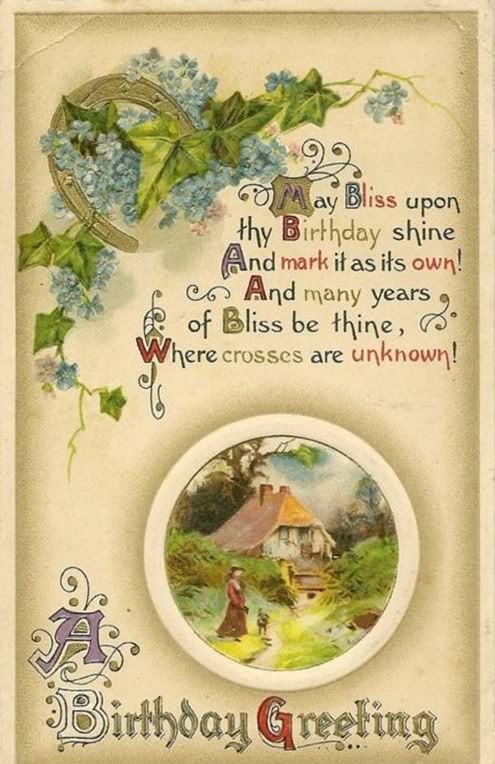
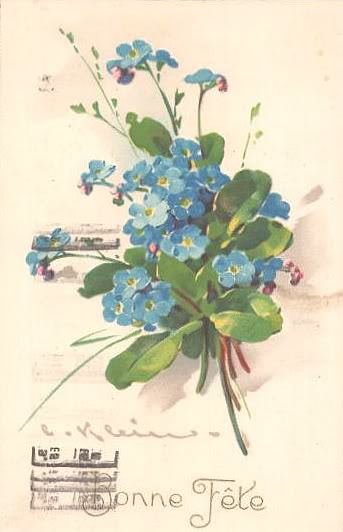
I was delighted to find this vintage photo – perfect for this article. It reminded me of my dear friend, Terry, who years back enrolled and completed the “Master Gardeners” program.
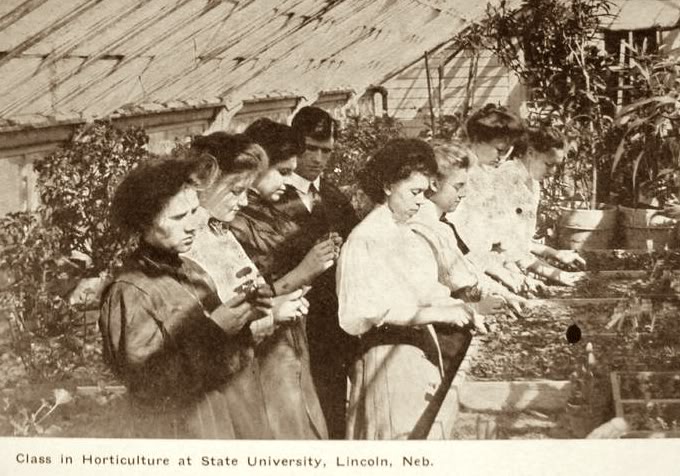
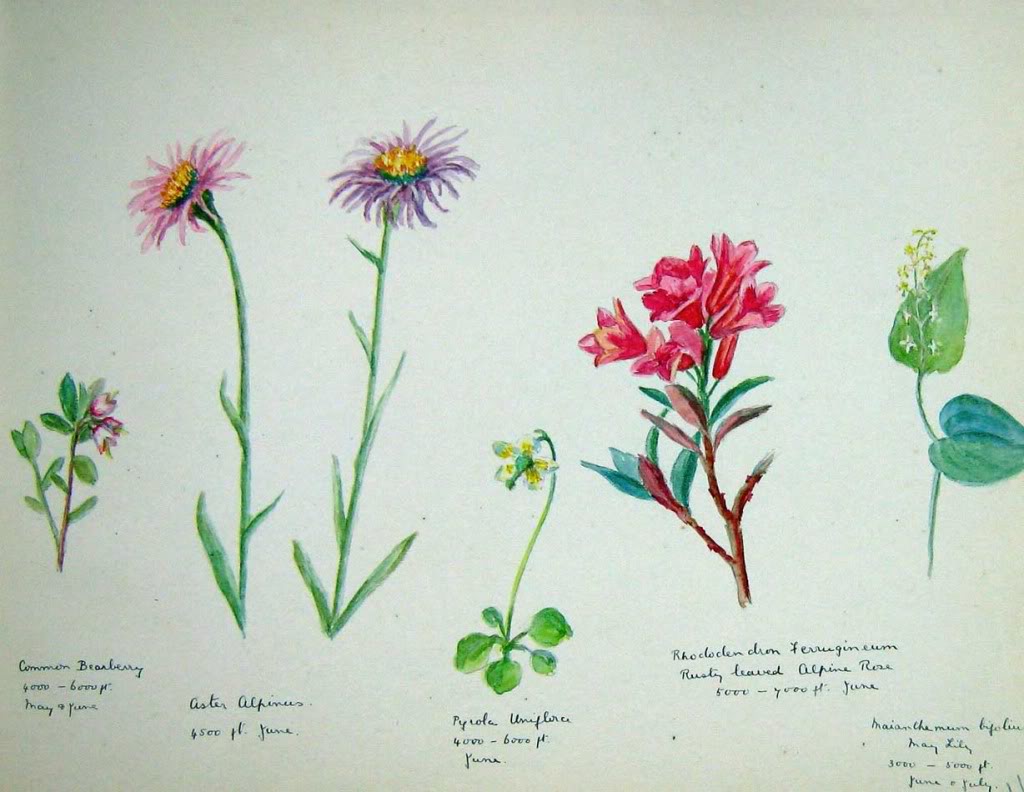
The “language of flowers”, also called floriography, was a Victorian era means of communication in which various flowers and floral arrangements were used to send “coded” messages, allowing individuals to express feelings which otherwise could not be spoken. Author, Kate Greenaway, published a very popular book about the subject. The idea became wildly popular and “floriographese” spread like wildfire. It was a time when people wrote often to keep in touch with friends and loved ones. The Victorians were in love with lavish decor and opulent detail – even in the most rural setting you would see much attention paid to embellishing a farm kitchen with quaint details. In my opinion, this was the most beautiful era in all of human history. The manners and the mannerisms were a thing of beauty also. We were a much more reserved people, painfully polite (if there is such a thing) and exceedingly thoughtful…or at least the idea was commonly accepted as the ideal to pursue. Outward expression of emotions was kept at a minimum, but emotions ran deep. Fantasy and flights of fancy could be expressed in letters and artful paper products made widely available here and in Europe. Postcards, poetry pamphlets, advertising and calling cards, and books illustrated the era’s passion for ornate style. Even paintings of a humble ‘farmy’ cottage were set into intricately carved frames painted with gold leaf.
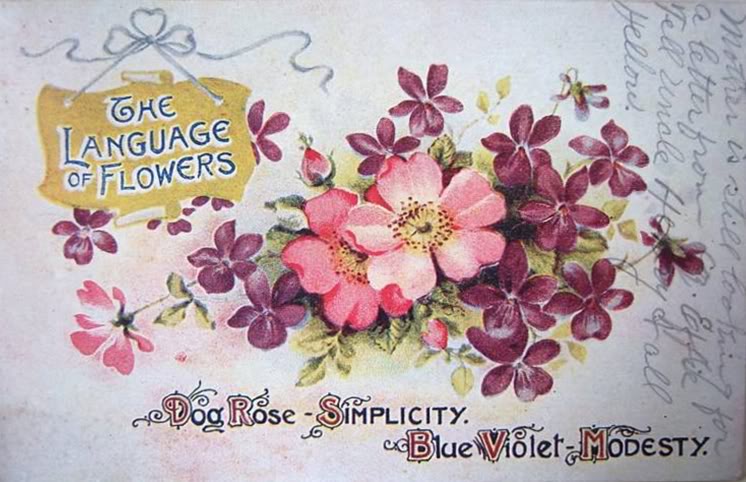
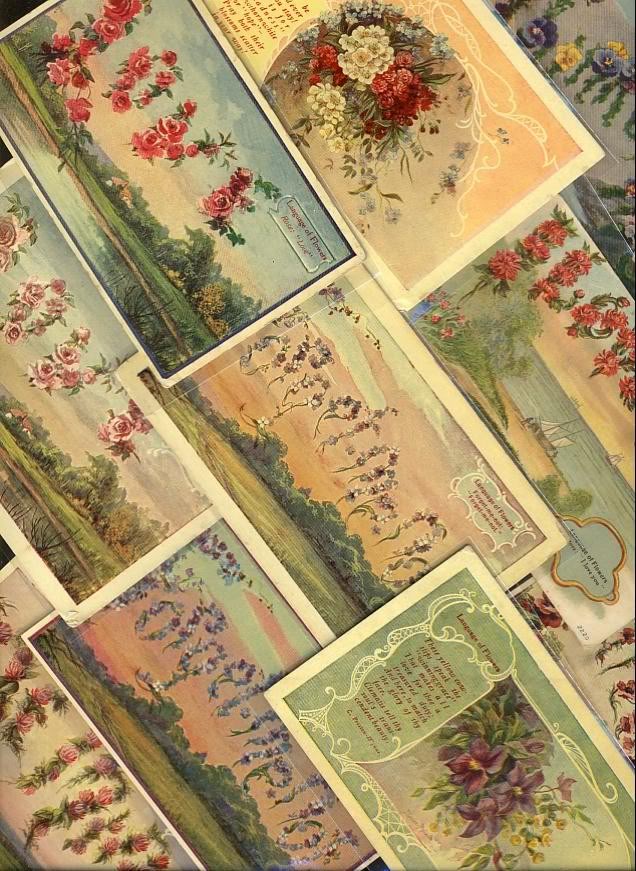
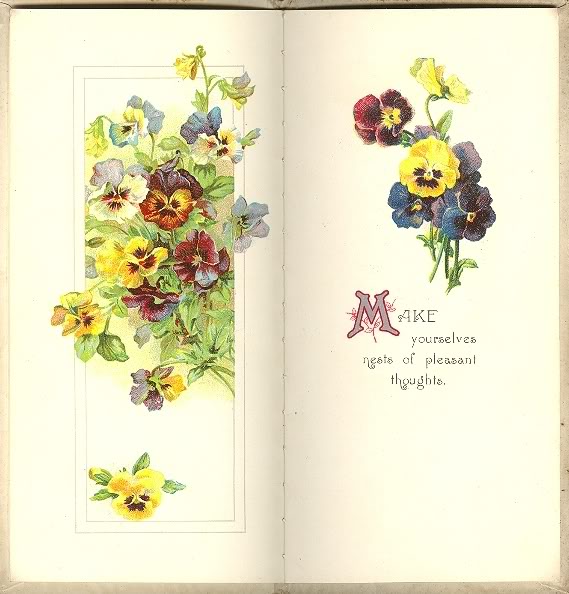
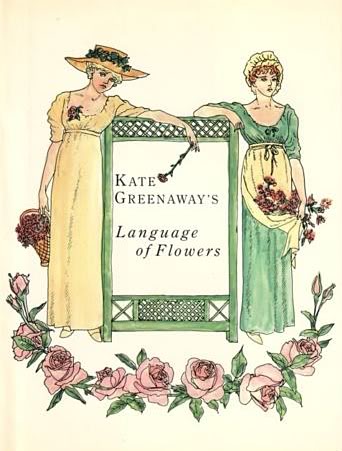
The language of flowers involved giving specific meanings to flowers, trees, fruits, grasses etc. For example, here is a flower that everyone is familiar with – Roses symbolize love.
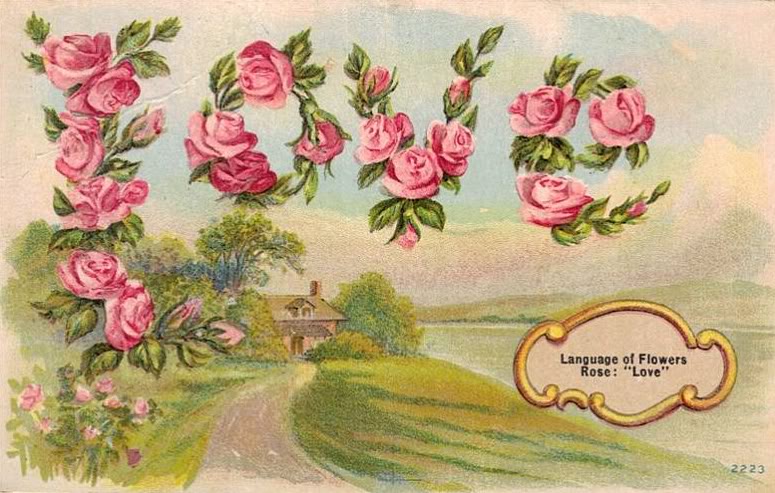
Cards of the era were often decorated with bouquets of flowers or single flowers to help convey the intended message. And, if you were familiar with the language of flowers vocabulary, you knew what the “code” meant. It was sort of like texting on cell phones…and while texting is useful, it offers no charm or beauty. It is naked communication minus the decorative foo-foo.
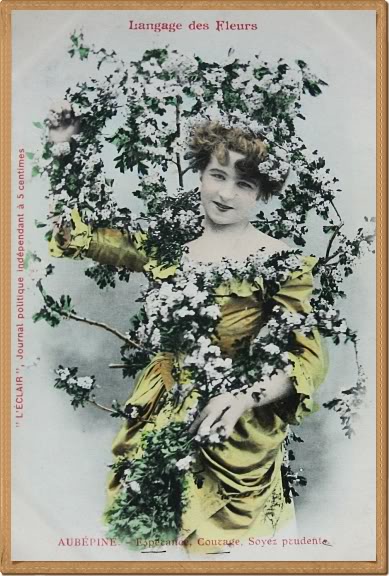
I said earlier that imagination was in full bloom during this time. Enter the “Flower Fairies”. I see them as “everyday” angels of the garden, reminding us how to put these unlikely words together…simple and majesty. Seeing majestic brilliance of design in the smallest flower is simple. Flower fairies added a human touch to the world of flora and fauna, making people feel closer to Nature. There were many fairy artists, but Cicely Mary Barker is chief among them. Her artwork is botanically accurate and the childlike fairies have sweet and winsome expressions…deeply thoughtful, playful and so very endearing. You will notice too that in many cases, the imagery is consistent with the language of flowers. Pansies were symbols of thought…most especially pleasant thoughts. So, if you were to receive a postcard with pansies or violas on it for your birthday, you would know that the sender wanted you to know that he or she was thinking kindly of you in honor of your special day.
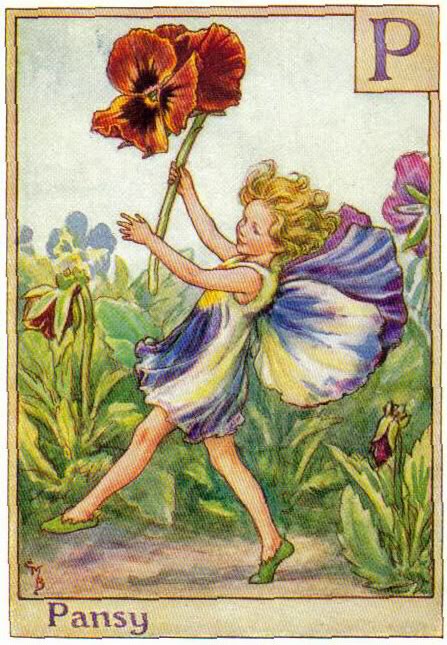
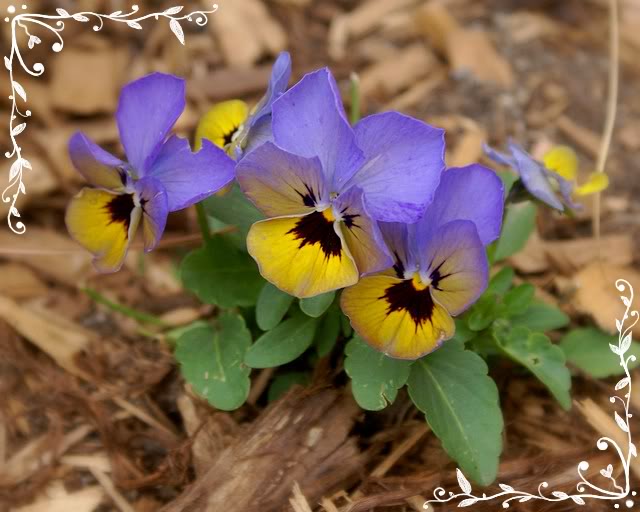
This brings me to my own adventures in “fairy land”…in the woods, in the garden, in yards and small-town alleys, out on the prairie…the fairies are everywhere.
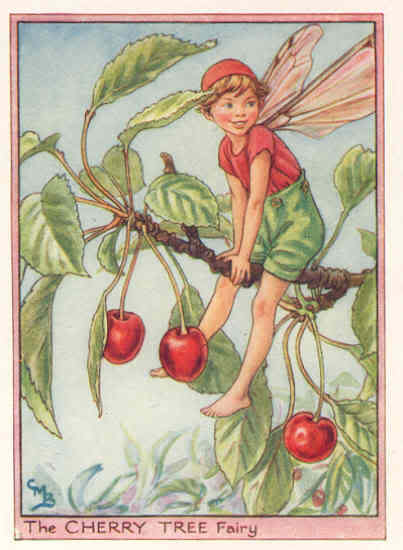
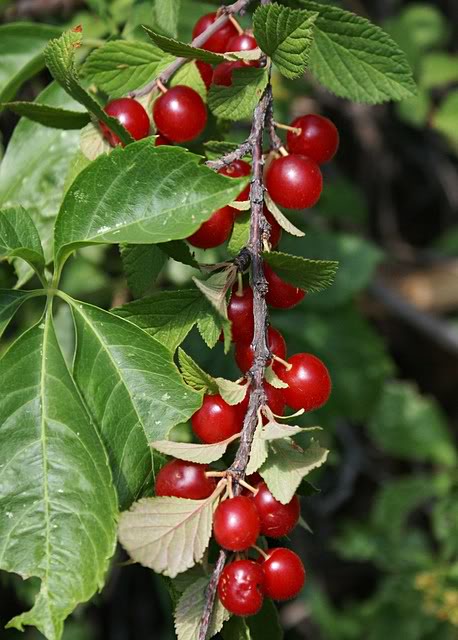
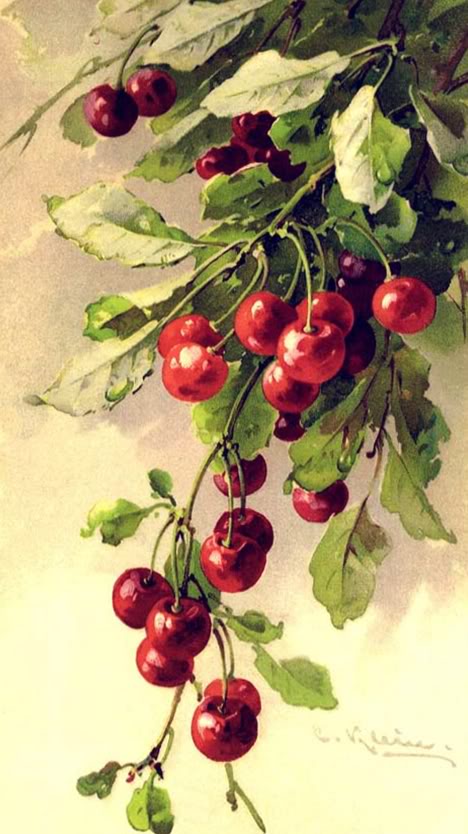
Here is one of my favorite flowers and the representative fairy…
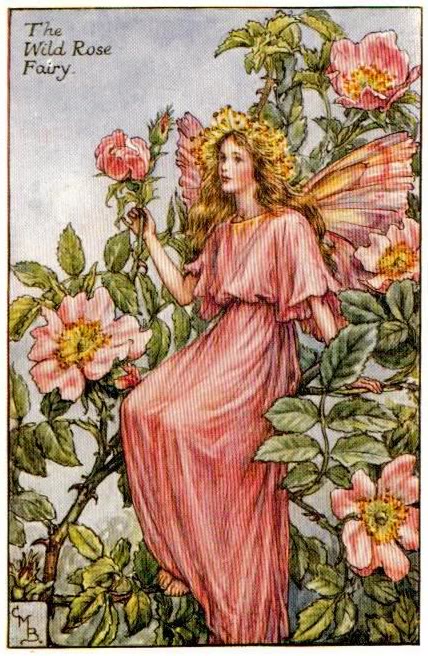
The Wild Rose and Sage (Artemesia) look and smell like “home” to me. In my opinion, there is no rose yet created by horticulturalist skills that can best the fragrance of the “weedy” original.
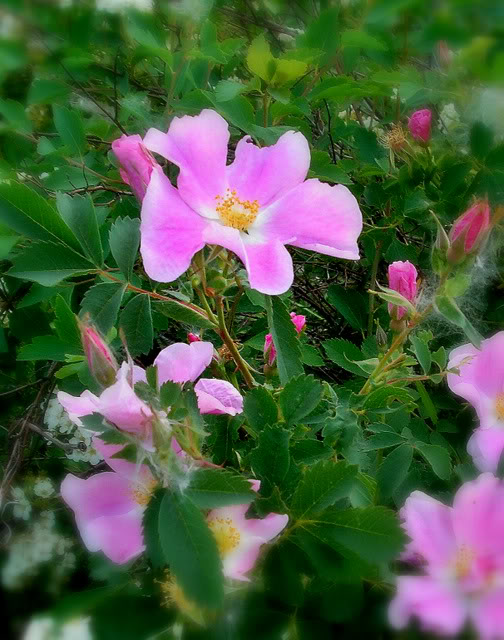
Not a blade of grass or tree, nor weed was overlooked by Cicely. Each was given it’s rightful place in the community of flower fairies…
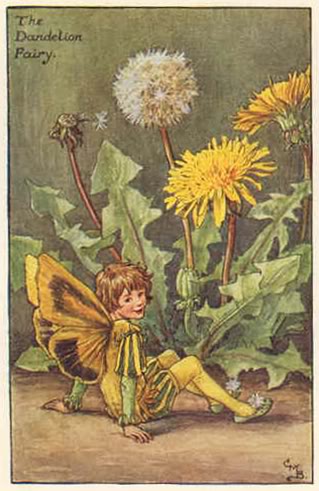
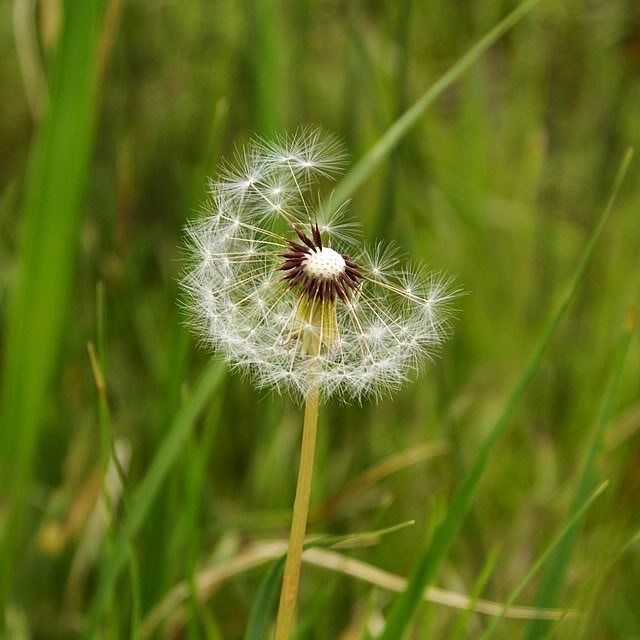
Sorrel, a salad favorite for me and it grows in profusion in our pasture here at home…
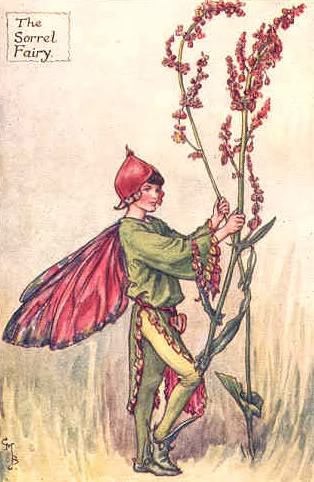
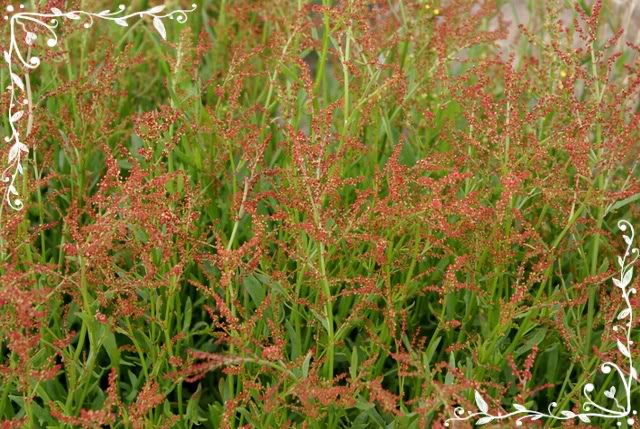
Then, of course, there are the beloved old-fashioned favorites that found a home in our hearts and near our country homes whether or not we happen to live in the country. The Lilac is a symbol of those first feelings of love.
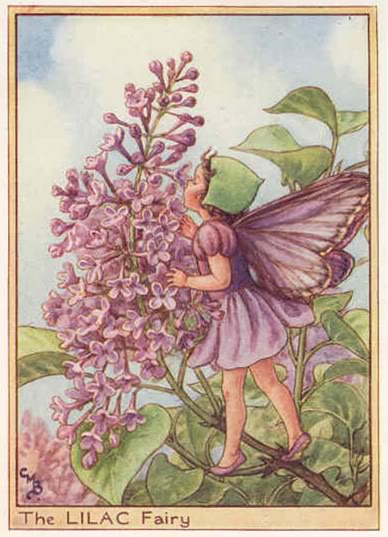
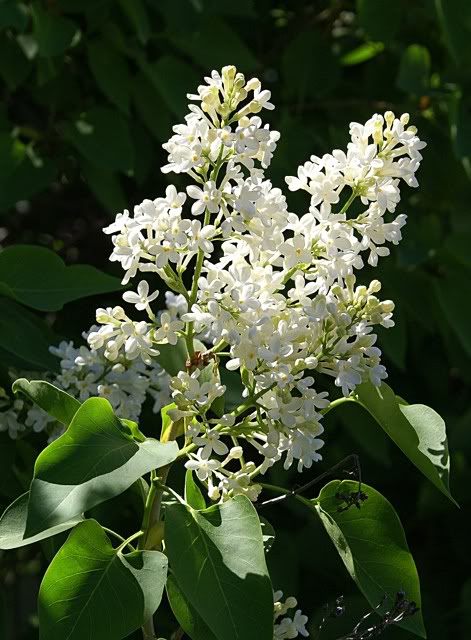
Another favorite of mine…the Geranium. How appropriate that her meaning is “friendship” or friendliness. When you see a potted geranium, it seems to be saying, “Welcome Friend”.
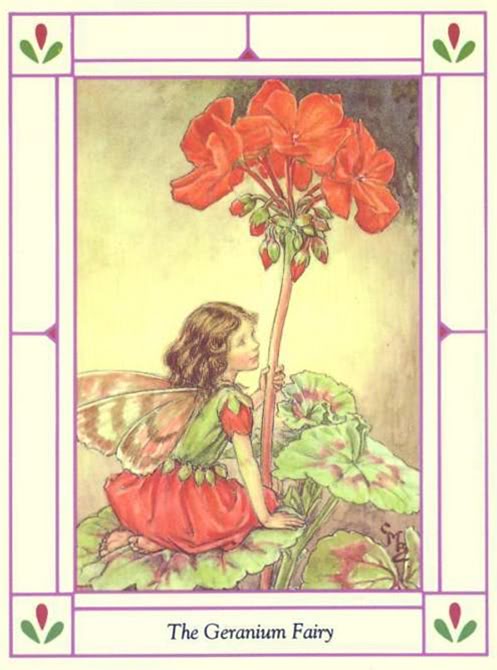
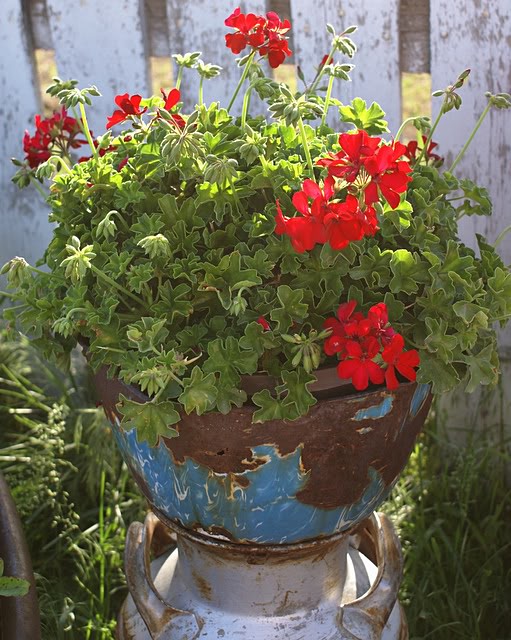
For a comprehensive list of flowers and their meanings, a quick search online will give you plenty of websites so that you can look into the matter further. Here is a quick list of some that make their home in my world…
Sunflower: devotion, pure and lofty thoughts.
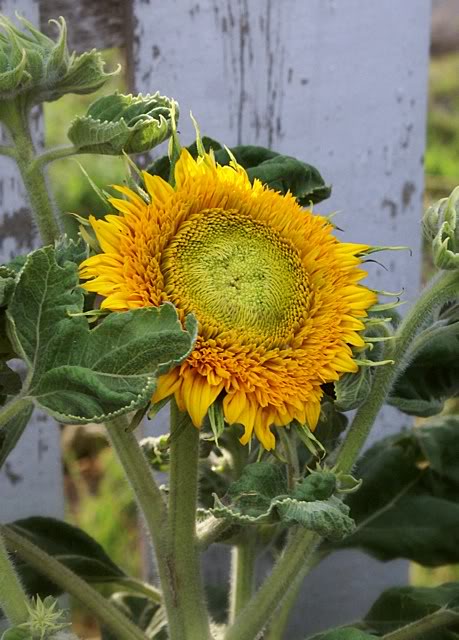
Yarrow: Healing
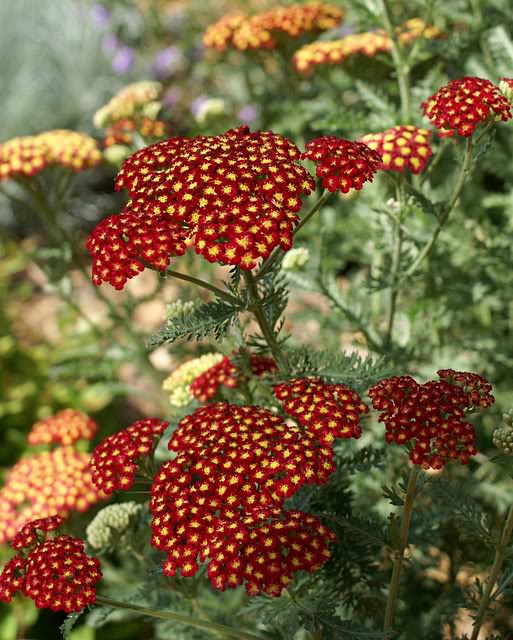
Larkspur: Being open hearted.
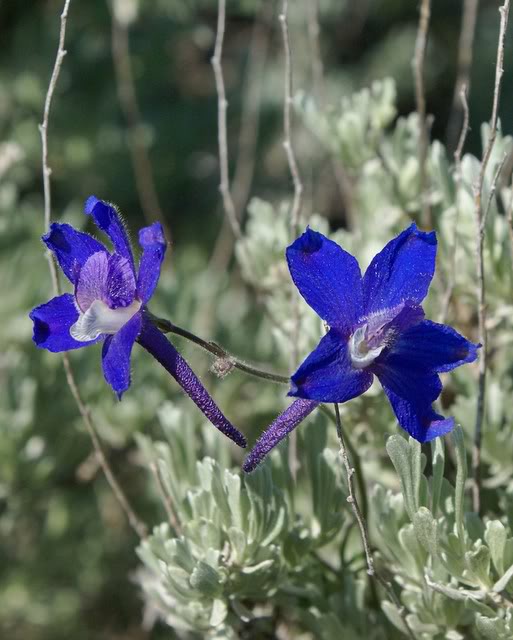
Tulip: Symbol of the perfect lover. This water garden is near the front door of my friend’s house (Anita).
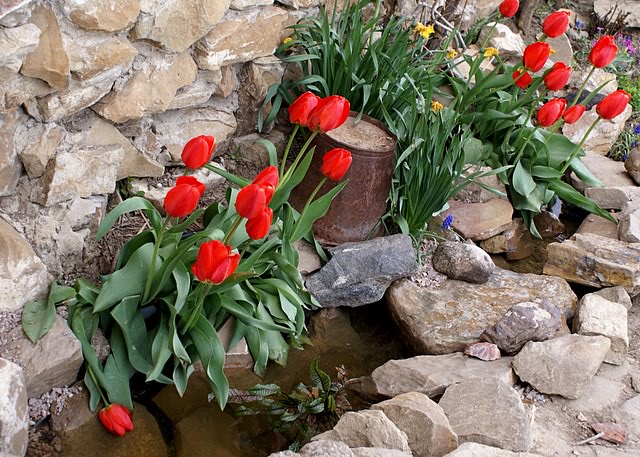
Daisy: Gentleness and loyal love.
.jpg)
I could turn this article into a book as I have a vast store of flower photos!! But, we need to move on and this article is long already. I did warn you that this was going to be a lengthy field trip. You might ask, “Ok, but where is the farmgirl flower fairy in all of this?” Well, here she is in the flesh (below). My comradette, Anita Shepperson. She and I went out to a friend’s ranch last week for the purpose of bringing home some wildflowers to transplant. Along with a couple of others, we were after Echinacea (large pink coneflowers or “Black Sampsons”) because this is the time they can be easily seen. They used to live here here at home, but after 7 long years of drought, many wildflowers gave up. So, I’m trying to reseed a few native-to-here varieties…doing what I can to preserve my own little corner of the natural world. Remember that word…preserve. This little tid-bit too, I think “sweat bees” need a different name! They’re the cutest little bees in Beedom. How about “Teddy Bear Bees”…because of their furry little coats. We had a grand time and had fun poking around the old ranch homestead. That particular area is known for being rattlesnake infested, so we were really careful. When it is very hot, sometimes rattlers won’t “rattle”…they just strike. We did have weapons (our shovels), but we really didn’t want to have to use them.
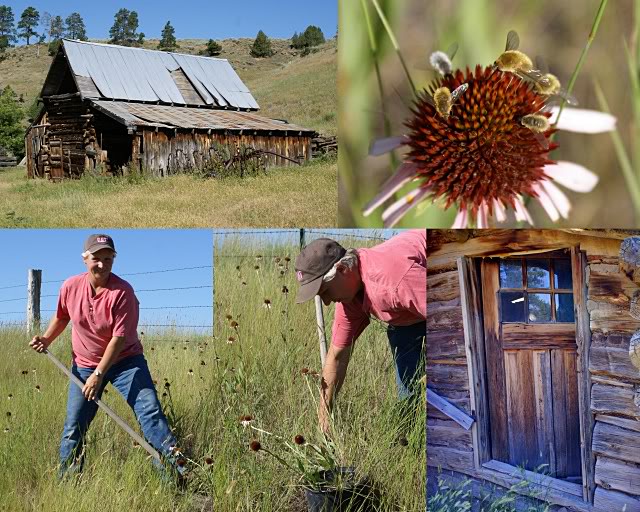
Back to preserve. We have a patron saint of sorts when it comes to preserving much of this country’s natural beauty. But, he wasn’t a farmgirl. He was our nature lovin’ president, Teddy Roosevelt, another “naturalist” ahead of his time in the same era we’ve been covering. Roosevelt started his efforts to preserve Yellowstone National Park as early as 1894 when he was president of the Boone and Crockett Club (a hunters’ organization comprised of eminent scientists, lawyers and politicians). He pushed hard for legislation that provided new levels of protection from commercial development and “ecological destruction”.
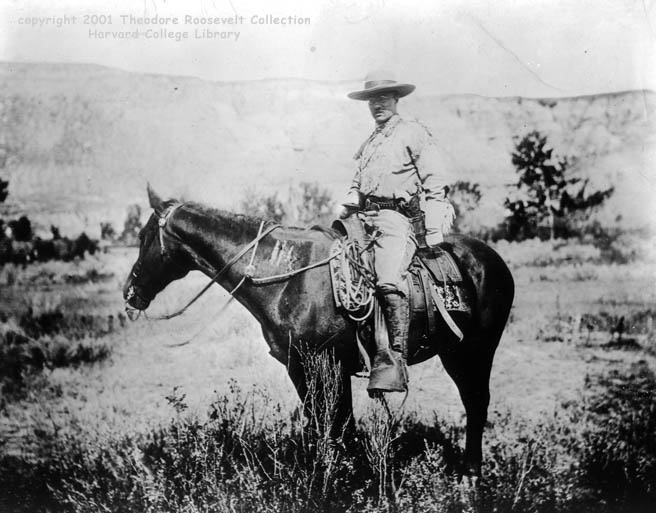
President Teddy Roosevelt’s cozy cabin…
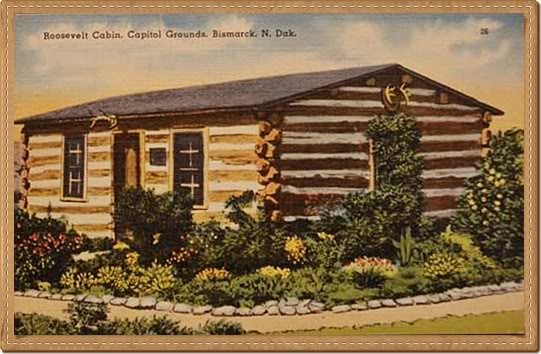
And, there we have the meat of the matter. Charm and whimsy are all well & good, but there needs to be meat on the bones of our affection toward the world we’ve been given dominion over…iron in our words and real world deeds right where we stand…and beyond, if we can make a difference elsewhere. Being a good steward and caretaker is a joyful undertaking whether it happens at home in the garden, on the farm, on the ocean, out in wilderness areas…or on a ranch. Once our work is done, the fun begins. Grab your kids, your spouse or a pal, then grab your fishin’ pole, your birding and/or wildflower books and head for the country. Better yet if there is a tent or a camper involved!
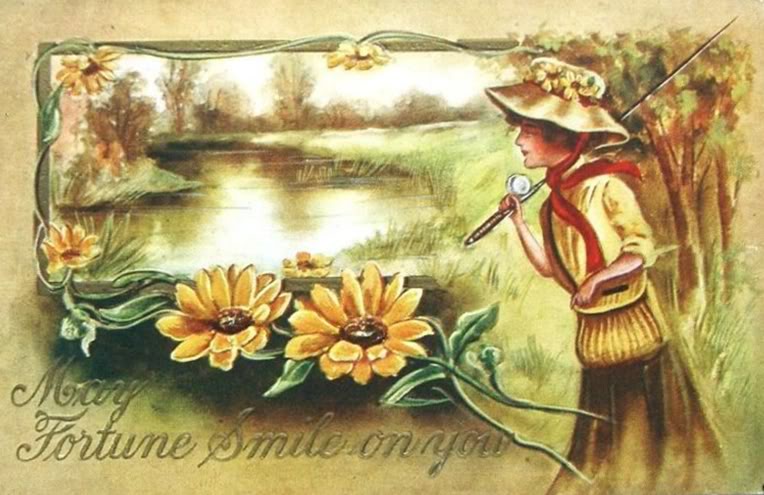
A trusty steed is #1 on my list of camping essentials. The Whinnymobile is my ‘recreational vehicle’ of choice.
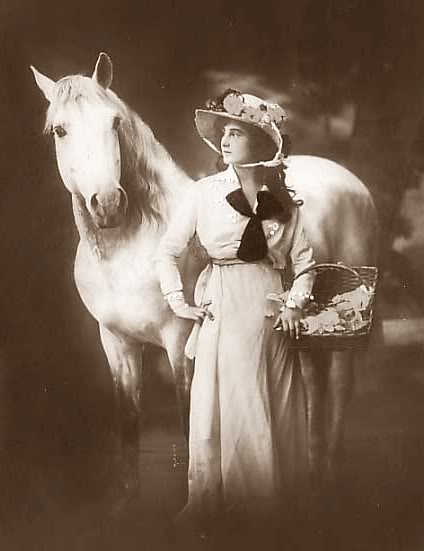
With that, I’m putting a fork in it…my work is done here. Thank you for stopping by, I hope this virtual trip back in time enriched your day in some small way. Thank you too for your kind words and correspondence. Here is a little flowery note from me to you. It was written over a hundred years ago, but the sentiment is as fresh as a cherry blossom.
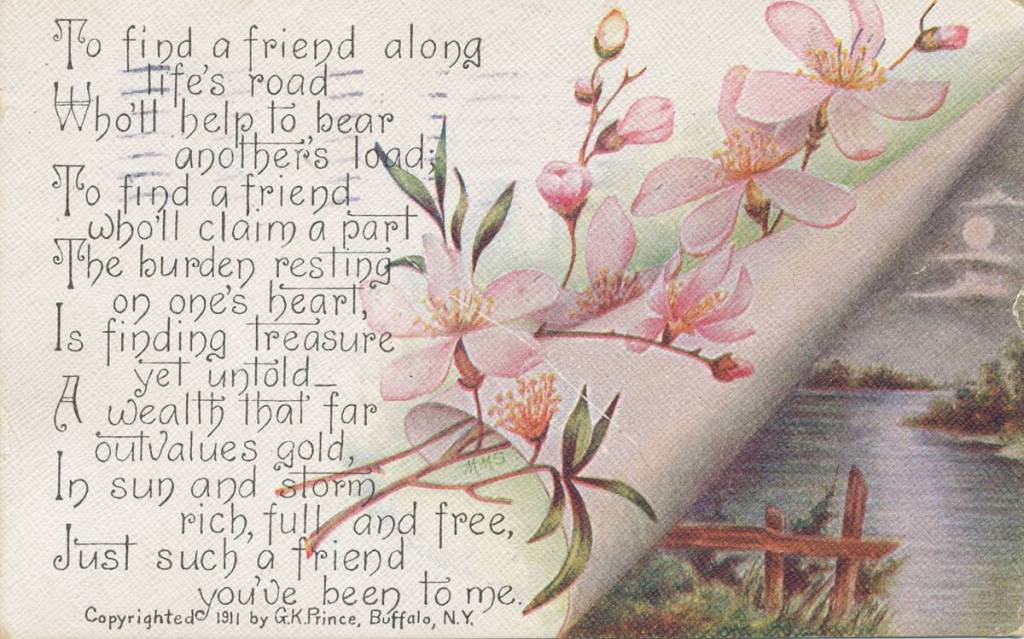
All contemporary photographs were taken by me, Shery Jespersen
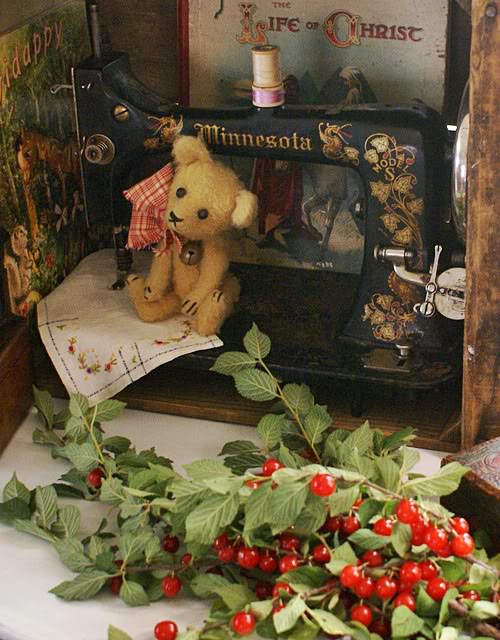


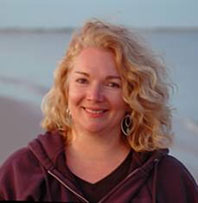
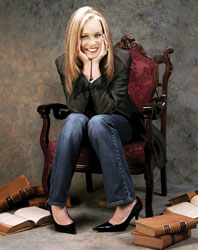

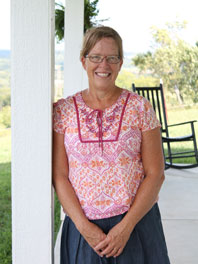
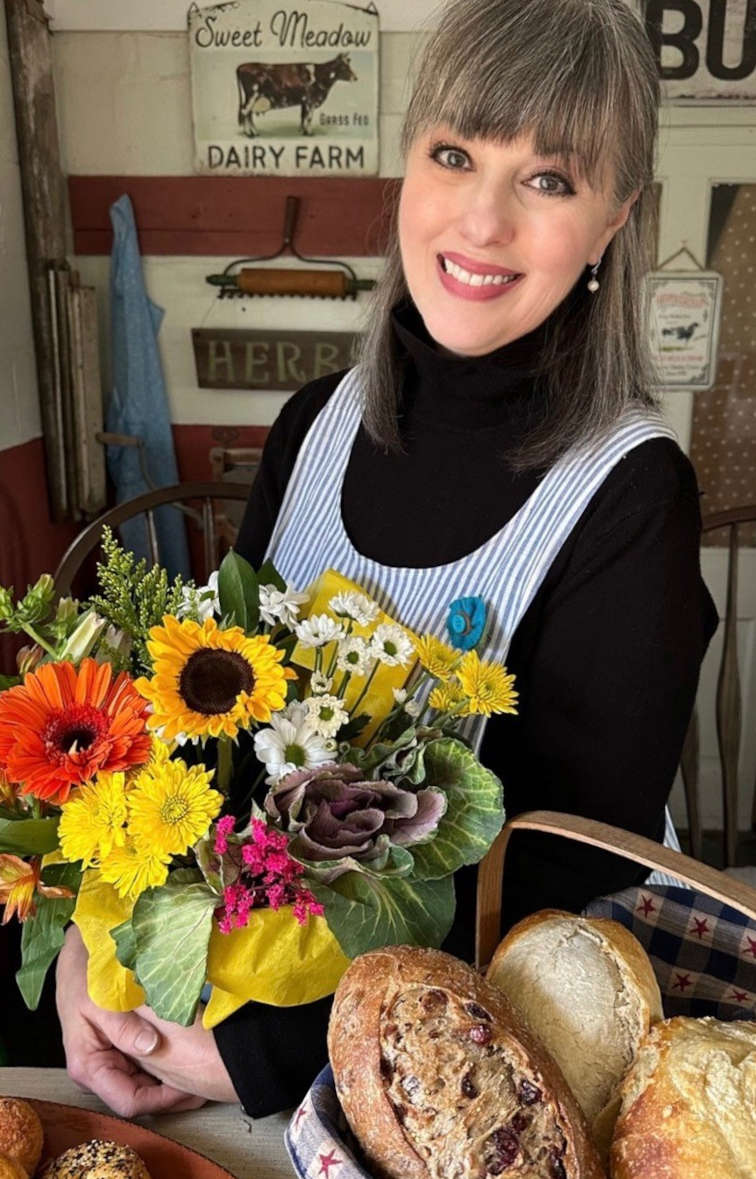
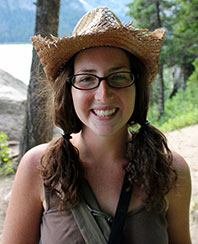
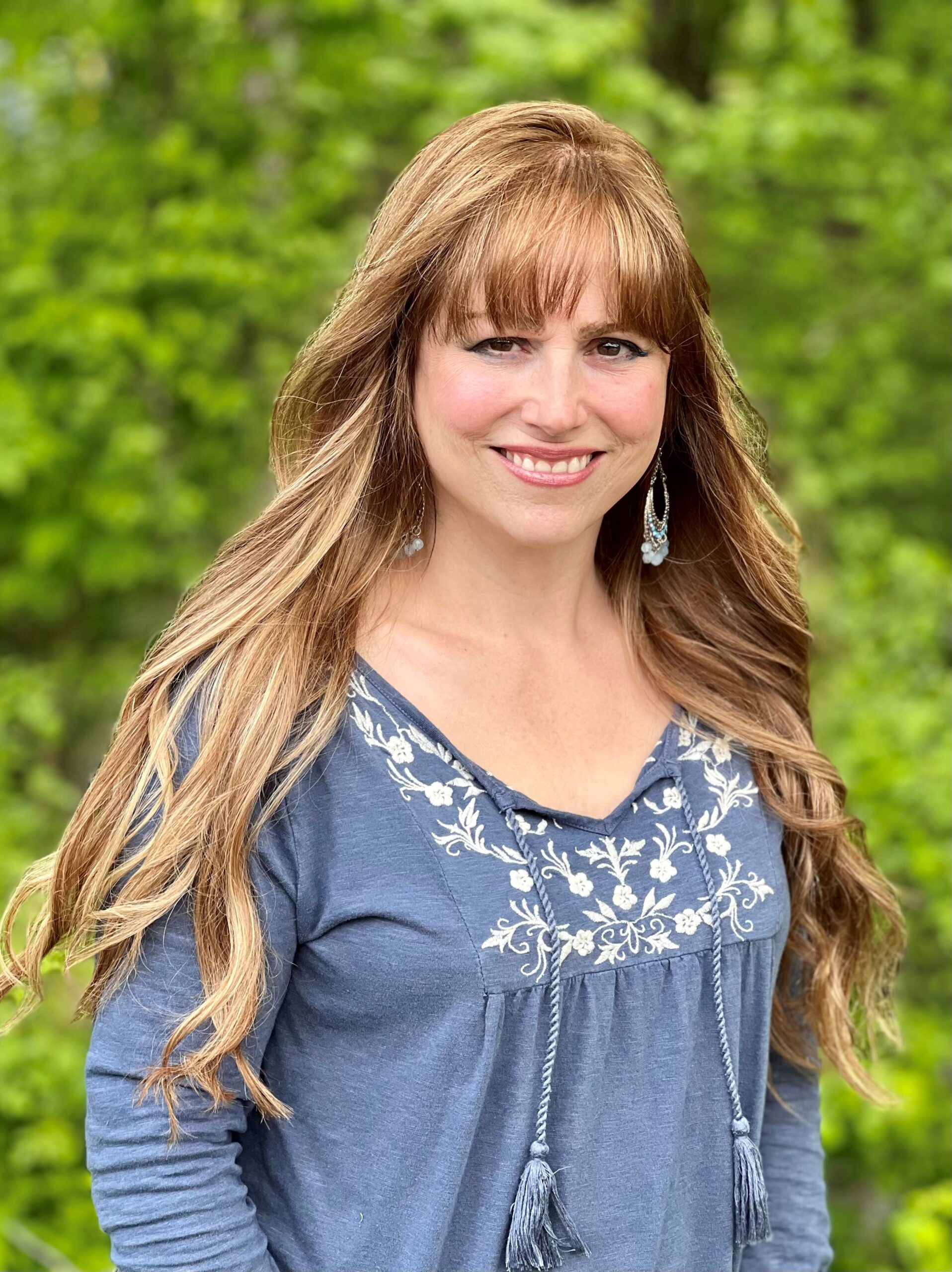


What a beautiful post! In the words of Anne Shirley, you are most certainly a "kindred spirit". I love the picture of the sweet little bees! Have you heard of Tasha Tudor? She is one of my favorites! Thanks so much for your beautiful writings, I look forward to reading each and every one of them.
Thank you kindly, Cindy :o) Oh my yes, Tasha Tudor! I lent my TT books out years ago and sadly they didn’t make it back home. I must replace them. What a treasure she was…and remains in the hearts of those she touched. Another illustrator’s work that I loved as a child was Elouise Wilkins — she illustrated several "Little Golden Books". Her work gives you a warm and homey feeling from the inside out. To this day, I want to step inside the pages of those dear little books — and I still have a few from when I was a wee lassie. shery j
Thank you for the quote from Teddy Roosevelt.
Shery, I feel words will not convey to you, how much this post meant to me. It is truly beautiful, as were all the fabulous pictures, graphics and research! It brought tears to my eyes.
I have noticed in the last twelve years of living here…outside Cheney, WA that some of the wildflowers are gone, so I will march right out when things cool down and separate the ones left and make sure there are a few more next year. Thanks, for that idea.
I just was reading about Teddy this morning and he said he would not have become president if he had not gone out West! Can you imagine?
Dear Sherry. Not only are you a gifted rancher, farmgirl, camper, and writer; but you are a VERY talented photographer. Thanks so much for sending this very lovely blog. I have the flower fairies in silk about 3"x 5". Thanks again. Bonnie
Shery, I loved your stories and the beautiful pictures. Isn’t it a shame that so many things in our beautiful world that God gave us to enjoy have been destroyed and forgotten. I love the wildflowers and try to bring some beauty in my yard with a lot of the old seeds if I can get them. I always plant zinnias, they are so bright and sunflowers are the ones that make me smile, But come to think of it, they all make me happy.
The last poem made me think of my best friend, Anna, she has been there for me since forever and I love her so much, I grew up with her husband and his dad grew up with my dad, our boys grew up together and went to school together. Now they are grown and we are still the "BESTEST" of friends. That is what I put on her card, when I send them to her. I would like to embroider that poem and give it to her on a pillow or something. Well you are great and I feel lucky to have known you through your blog. Keep up the great work. Juanita
I LOVE this post. The old time illustrations have a special place in my heart. Very beautiful photos too.
happy day!
I adore your blog today. I find fairies very enchanting also along with dragonflies near water or looking for it. I loved and just visited Rose O’Neal’s home in Missouri, the creator of the "Kewpie Dolls". I am still awestruck with her home and surroundings.
Thanks for your wonderful thoughts today and sharing them with us. I think I need to watch the "Miss Potter" movie again with your reminding me.
I do love that era also!
Smiles, Cyndi
Your photographs are wonderful… thank you so much for sharing all with us…
The story too just takes us back, a moment in time… I love flowers, the posts, the words, your photos… such a talent shared… and most appreciated the quiet spot in a busy week.
Thumbs Up…
Jill
Bravo! I have three different editions of the Language of Flowers, has always been a favorite. You sure are Larkspur!
Oh, Shery, this is the best ever! But I say that every time I read one of your blogs. You are my favorite "Wild Rose". Again, your photos are absolutely awesome, your prose warms the heart and your research most impressive! Mary Jane’s Farm has found a treasure in you! And I will always treasure your friendship. One of these days I am going to come to WY to walk in the wildflowers with you.
Here is a poem from 1924 that I would like to share with you. It is entitled "You are My Friend"
You are my friend…you warm my heart.
In all my thoughts you have a part.
In all I say, in all I do.
There is a comforting bit of you:
I see your smile, I feel your hand.
I hear your voice and understand.
No word will mar, no deed will end, this comradeship of ours, dear Friend.
Hi, Suellen,
Where did you get that poem? My grandmother had it framed in her house for as long as I can remember, but it was given away after she died. Thank you so much for posting it!
Pat Minga
I have just come back from walking in to town. I stopped off at three antique stores. I bought an out of print book, and saw all sorts of china, prints and other Victorian type stuff.
I went on to the farmers market and bought cheese, veggies, more veggies, and some daisies for my recycled coke bottle, re-purposed vase. I really had a very good time. After I got home, I went on line and found this blog waiting. I know this was an excellent morning.
Loved this today. Helped to keep the fires lit in my heart to know that I am not the only one with the passion of these things. Teddy Roosevelt is one of my heroes.
How lovely this article is and how much you have expressed my very loves. The language of flowers and the flower fairies are timeless and wonderful expressions of simplicity and joy of nature. Thank you for your lovely words and gorgeous pictures.
My dear Shery,
This was a post after my own heart…I read each and every word with care and I adored all of those treasured antique cards, and the " contemporary " photos as well…It’s so true what you say about being a good steward and caretaker of our earth no matter where we are planted…
I have to believe that for each one of us who has an appreciation for the natural world we are doing a little bit of fairy magic in our own special way!
Dandelion Wishes to you and thank you for your wonderful words!
Deb ( who loves the Dandelion Fairy picture ) ADORABLE!
Shery you ARE a kindred spirit to so many. Love, Terry
I too have just been introduced to your website after seeing your name in the MaryJanesFarm magazine I receive.
Absolutely Love It! You are a creature after my own heart; and you are blessing many of us by your time and talents.
I do not live on a farm or in the open country. WE have only 5 acres in a fastly becoming subdivision of mobile homes and small homes. We live as though we are in the wide open spaces and enjoy the huge trees, fields of grass and wild flowers that we transplant and replant. We have 9 chickens and 9 cats, not in the same place. I love to read your farmgirl blog and imagine myself in each one. Thank you for bringing this touch of real life to me and mine.